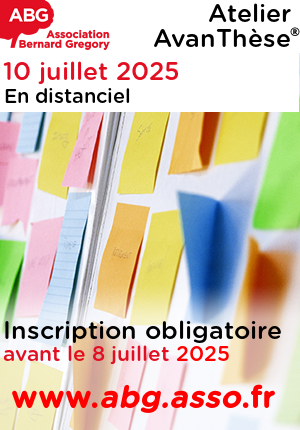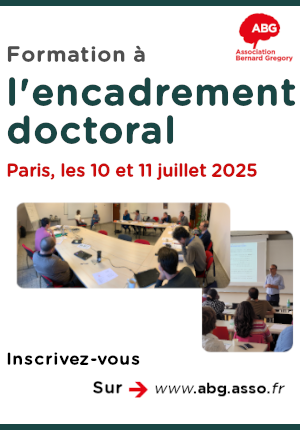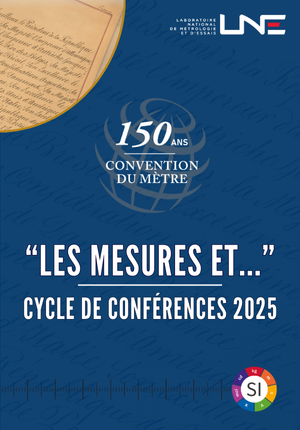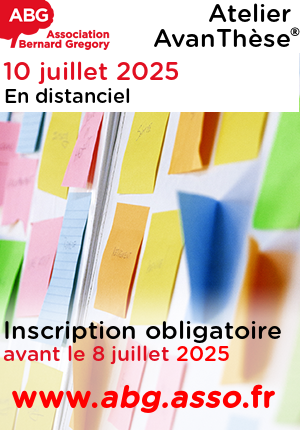2D- material-augmented nonlinear silicon photonics (SECURED SCHOLARSHIP/SALARY) // 2D- material-augmented nonlinear silicon photonics (SECURED SCHOLARSHIP/SALARY)
|
ABG-131929
ADUM-65855 |
Thesis topic | |
| 2025-05-14 | Other public funding |
Université Paris-Saclay GS Sciences de l'ingénierie et des systèmes
Palaiseau - Ile-de-France - France
2D- material-augmented nonlinear silicon photonics (SECURED SCHOLARSHIP/SALARY) // 2D- material-augmented nonlinear silicon photonics (SECURED SCHOLARSHIP/SALARY)
- Electronics
silicon photonics, TMDs, 2D-materials, nonlinear optics
silicon photonics, TMDs, 2D-materials, nonlinear optics
silicon photonics, TMDs, 2D-materials, nonlinear optics
Topic description
The integration of various materials and the possibility of realising a wide range of optical functions on a chip through the advanced miniaturisation of guided optics in silicon photonics offer very broad opportunities for a continuum of studies ranging from fundamental physics to applications [1]. A recent trend of the field has been devoted to the investigation of second and third-order optical nonlinearities of the available materials for the realization of integrated light optical sources, including frequency comb [2] or supercontinuum [3] sources. In the race to exploring new phenomena and implement key on-chip functionalities (e.g. light emission, light modulation, beam stearing, etc), the list of available materials is a key point. The set of most classical materials available in silicon photonics includes Si itself, with additionally SiO2, and Si3N4 or silicon-rich nitride. The properties of these materials have been pushed to their limits, enabling a high-level of integration and the realization of complex circuits (e.g. see [4]]. To go beyond, other approaches are now necessary.
In this context, the topic of the research proposal consists in contributing to the exploration of the possible use of two-dimensional mono-atomic materials (graphene, MoS2, WS2) with a view to overcoming limitations of silicon or silicon nitride photonic structures. By integrating 2D materials on photonic waveguides, it is possible to exploit some of their exceptional physical properties to control the propagation of guided modes, whose interaction (overlap) with 2D materials can be exploited and optimised. This approach opens up a vast field of possibilities, ranging from the study of the physical properties of 2D materials to applications. The PhD candidate will focus in particular on the study of the third-order non-linear optical properties of these materials, with a view to demonstrating optical pulse compression in hybrid optical waveguides coated with 2D materials [5]. A series of studies aiming at understanding the influence of the number of atomic monolayers and to propose, produce and characterise hybrid optical waveguides and photonic structures based on this integration approach will be carried out.
Objective 1: Design and characterize optical hybrid waveguides (silicon nitride based)
Objective 2: Characterize their effective third-order nonlinearity (Kerr like)
Objective 3: Explore schemes to realize optical pulse compression based on these waveguides (from >1ps down to 200fs or below)
The research facilities:
The candidate will be hosted by the “Minaphot” group at C2N (https://minaphot.c2n.universite-paris-saclay.fr/en/).
The research environment comprises the clean room facilities of C2N and the simulation and experimental setups of the Minaphot group.
What we expect from you:
• Enthusiasm and strong involvement in your project, a growing autonomy
• Taste for Optics&Photonics, including experiments AND simulation
• Ability to communicate and work in a group, an open-minded attitude and an ability to conduct a project by addressing questions to relevant people around you
------------------------------------------------------------------------------------------------------------------------------------------------------------------------
------------------------------------------------------------------------------------------------------------------------------------------------------------------------
The integration of various materials and the possibility of realising a wide range of optical functions on a chip through the advanced miniaturisation of guided optics in silicon photonics offer very broad opportunities for a continuum of studies ranging from fundamental physics to applications [1]. A recent trend of the field has been devoted to the investigation of second and third-order optical nonlinearities of the available materials for the realization of integrated light optical sources, including frequency comb [2] or supercontinuum [3] sources. In the race to exploring new phenomena and implement key on-chip functionalities (e.g. light emission, light modulation, beam stearing, etc), the list of available materials is a key point. The set of most classical materials available in silicon photonics includes Si itself, with additionally SiO2, and Si3N4 or silicon-rich nitride. The properties of these materials have been pushed to their limits, enabling a high-level of integration and the realization of complex circuits (e.g. see [4]]. To go beyond, other approaches are now necessary.
In this context, the topic of the research proposal consists in contributing to the exploration of the possible use of two-dimensional mono-atomic materials (graphene, MoS2, WS2) with a view to overcoming limitations of silicon or silicon nitride photonic structures. By integrating 2D materials on photonic waveguides, it is possible to exploit some of their exceptional physical properties to control the propagation of guided modes, whose interaction (overlap) with 2D materials can be exploited and optimised. This approach opens up a vast field of possibilities, ranging from the study of the physical properties of 2D materials to applications. The PhD candidate will focus in particular on the study of the third-order non-linear optical properties of these materials, with a view to demonstrating optical pulse compression in hybrid optical waveguides coated with 2D materials [5]. A series of studies aiming at understanding the influence of the number of atomic monolayers and to propose, produce and characterise hybrid optical waveguides and photonic structures based on this integration approach will be carried out.
Objective 1: Design and characterize optical hybrid waveguides (silicon nitride based)
Objective 2: Characterize their effective third-order nonlinearity (Kerr like)
Objective 3: Explore schemes to realize optical pulse compression based on these waveguides (from >1ps down to 200fs or below)
What we expect from you:
• Enthusiasm and strong involvement in your project, a growing autonomy
• Taste for Optics&Photonics, including experiments AND simulation
• Ability to communicate and work in a group, an open-minded attitude and an ability to conduct a project by addressing questions to relevant people around you
------------------------------------------------------------------------------------------------------------------------------------------------------------------------
------------------------------------------------------------------------------------------------------------------------------------------------------------------------
Début de la thèse : 01/10/2025
WEB : https://minaphot.c2n.universite-paris-saclay.fr/en/
In this context, the topic of the research proposal consists in contributing to the exploration of the possible use of two-dimensional mono-atomic materials (graphene, MoS2, WS2) with a view to overcoming limitations of silicon or silicon nitride photonic structures. By integrating 2D materials on photonic waveguides, it is possible to exploit some of their exceptional physical properties to control the propagation of guided modes, whose interaction (overlap) with 2D materials can be exploited and optimised. This approach opens up a vast field of possibilities, ranging from the study of the physical properties of 2D materials to applications. The PhD candidate will focus in particular on the study of the third-order non-linear optical properties of these materials, with a view to demonstrating optical pulse compression in hybrid optical waveguides coated with 2D materials [5]. A series of studies aiming at understanding the influence of the number of atomic monolayers and to propose, produce and characterise hybrid optical waveguides and photonic structures based on this integration approach will be carried out.
Objective 1: Design and characterize optical hybrid waveguides (silicon nitride based)
Objective 2: Characterize their effective third-order nonlinearity (Kerr like)
Objective 3: Explore schemes to realize optical pulse compression based on these waveguides (from >1ps down to 200fs or below)
The research facilities:
The candidate will be hosted by the “Minaphot” group at C2N (https://minaphot.c2n.universite-paris-saclay.fr/en/).
The research environment comprises the clean room facilities of C2N and the simulation and experimental setups of the Minaphot group.
What we expect from you:
• Enthusiasm and strong involvement in your project, a growing autonomy
• Taste for Optics&Photonics, including experiments AND simulation
• Ability to communicate and work in a group, an open-minded attitude and an ability to conduct a project by addressing questions to relevant people around you
------------------------------------------------------------------------------------------------------------------------------------------------------------------------
------------------------------------------------------------------------------------------------------------------------------------------------------------------------
The integration of various materials and the possibility of realising a wide range of optical functions on a chip through the advanced miniaturisation of guided optics in silicon photonics offer very broad opportunities for a continuum of studies ranging from fundamental physics to applications [1]. A recent trend of the field has been devoted to the investigation of second and third-order optical nonlinearities of the available materials for the realization of integrated light optical sources, including frequency comb [2] or supercontinuum [3] sources. In the race to exploring new phenomena and implement key on-chip functionalities (e.g. light emission, light modulation, beam stearing, etc), the list of available materials is a key point. The set of most classical materials available in silicon photonics includes Si itself, with additionally SiO2, and Si3N4 or silicon-rich nitride. The properties of these materials have been pushed to their limits, enabling a high-level of integration and the realization of complex circuits (e.g. see [4]]. To go beyond, other approaches are now necessary.
In this context, the topic of the research proposal consists in contributing to the exploration of the possible use of two-dimensional mono-atomic materials (graphene, MoS2, WS2) with a view to overcoming limitations of silicon or silicon nitride photonic structures. By integrating 2D materials on photonic waveguides, it is possible to exploit some of their exceptional physical properties to control the propagation of guided modes, whose interaction (overlap) with 2D materials can be exploited and optimised. This approach opens up a vast field of possibilities, ranging from the study of the physical properties of 2D materials to applications. The PhD candidate will focus in particular on the study of the third-order non-linear optical properties of these materials, with a view to demonstrating optical pulse compression in hybrid optical waveguides coated with 2D materials [5]. A series of studies aiming at understanding the influence of the number of atomic monolayers and to propose, produce and characterise hybrid optical waveguides and photonic structures based on this integration approach will be carried out.
Objective 1: Design and characterize optical hybrid waveguides (silicon nitride based)
Objective 2: Characterize their effective third-order nonlinearity (Kerr like)
Objective 3: Explore schemes to realize optical pulse compression based on these waveguides (from >1ps down to 200fs or below)
What we expect from you:
• Enthusiasm and strong involvement in your project, a growing autonomy
• Taste for Optics&Photonics, including experiments AND simulation
• Ability to communicate and work in a group, an open-minded attitude and an ability to conduct a project by addressing questions to relevant people around you
------------------------------------------------------------------------------------------------------------------------------------------------------------------------
------------------------------------------------------------------------------------------------------------------------------------------------------------------------
Début de la thèse : 01/10/2025
WEB : https://minaphot.c2n.universite-paris-saclay.fr/en/
Funding category
Other public funding
Funding further details
ANR
Presentation of host institution and host laboratory
Université Paris-Saclay GS Sciences de l'ingénierie et des systèmes
Institution awarding doctoral degree
Université Paris-Saclay GS Sciences de l'ingénierie et des systèmes
Graduate school
575 Electrical, Optical, Bio-physics and Engineering
Candidate's profile
What we expect from you:
• Enthusiasm and strong involvement in your project, a growing autonomy
• Taste for Optics&Photonics, including experiments AND simulation
• Ability to communicate and work in a group, an open-minded attitude and an ability to conduct a project by addressing questions to relevant people around you
What we expect from you: • Enthusiasm and strong involvement in your project, a growing autonomy • Taste for Optics&Photonics, including experiments AND simulation • Ability to communicate and work in a group, an open-minded attitude and an ability to conduct a project by addressing questions to relevant people around you
What we expect from you: • Enthusiasm and strong involvement in your project, a growing autonomy • Taste for Optics&Photonics, including experiments AND simulation • Ability to communicate and work in a group, an open-minded attitude and an ability to conduct a project by addressing questions to relevant people around you
2025-08-31
Apply
Close
Vous avez déjà un compte ?
Nouvel utilisateur ?
More information about ABG?
Get ABG’s monthly newsletters including news, job offers, grants & fellowships and a selection of relevant events…
Discover our members
 CESI
CESI  SUEZ
SUEZ  Généthon
Généthon  Laboratoire National de Métrologie et d'Essais - LNE
Laboratoire National de Métrologie et d'Essais - LNE  Tecknowmetrix
Tecknowmetrix  TotalEnergies
TotalEnergies  CASDEN
CASDEN  Aérocentre, Pôle d'excellence régional
Aérocentre, Pôle d'excellence régional  MabDesign
MabDesign  ONERA - The French Aerospace Lab
ONERA - The French Aerospace Lab  Groupe AFNOR - Association française de normalisation
Groupe AFNOR - Association française de normalisation  ASNR - Autorité de sûreté nucléaire et de radioprotection - Siège
ASNR - Autorité de sûreté nucléaire et de radioprotection - Siège 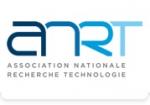 ANRT
ANRT  Nokia Bell Labs France
Nokia Bell Labs France 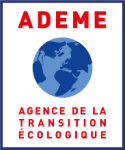 ADEME
ADEME  MabDesign
MabDesign  Institut Sup'biotech de Paris
Institut Sup'biotech de Paris 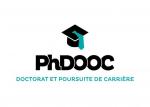 PhDOOC
PhDOOC  Ifremer
Ifremer



